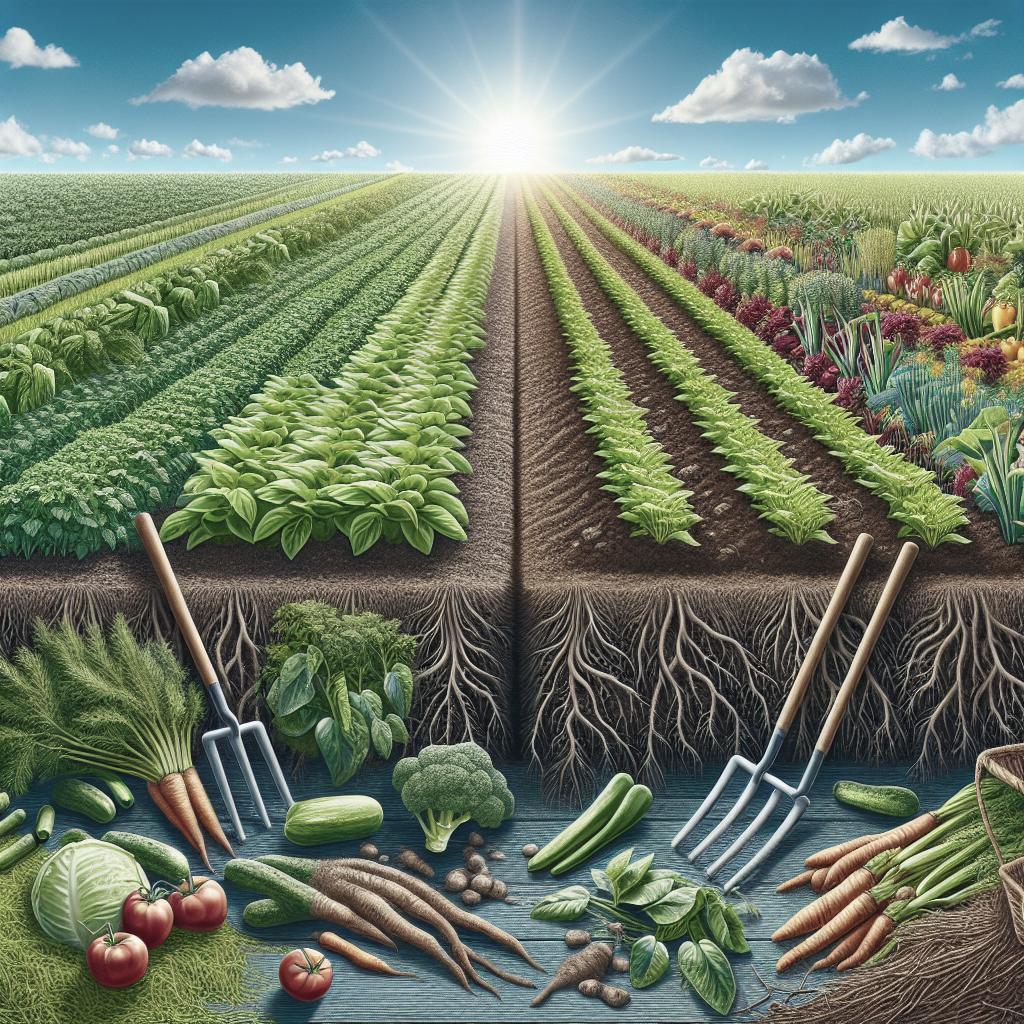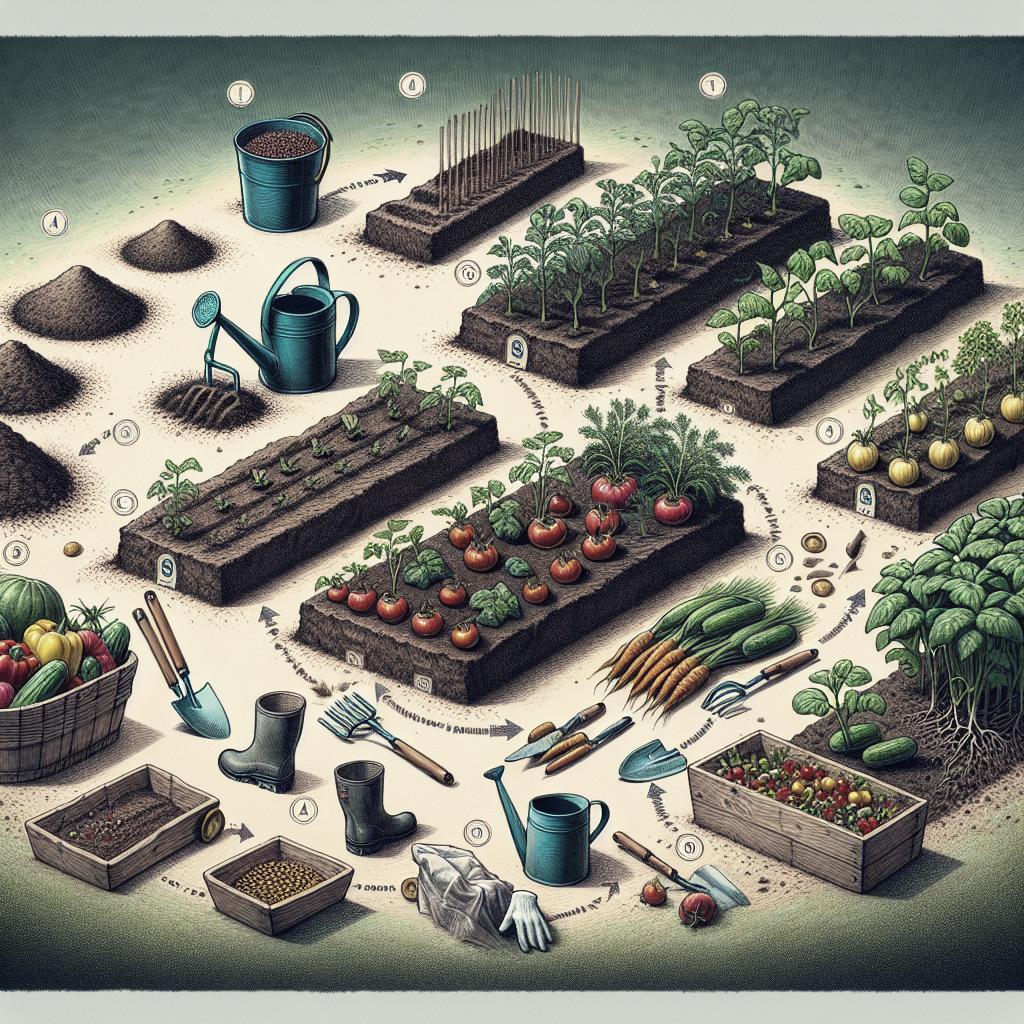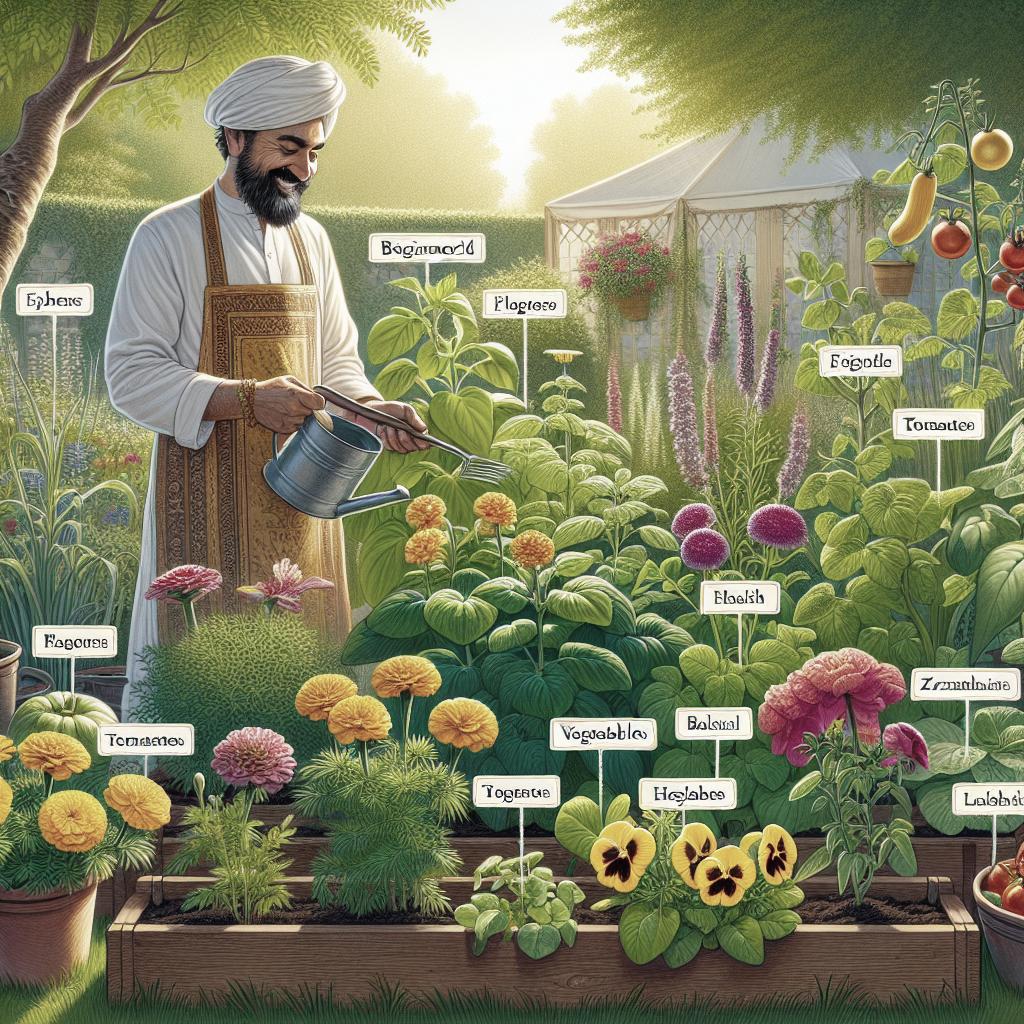“`html
The Benefits of No-Till Gardening
No-till gardening is a revolutionary approach that challenges traditional gardening practices. By fundamentally altering the way we interact with soil, it offers a multitude of benefits that enhance garden productivity and sustainability. Through natural processes, no-till gardening reduces soil disturbance, which improves soil health and structure. This blog explores the various benefits of no-till gardening, including enhanced aeration, water conservation, and reduced weeding efforts. Additionally, we’ll delve into practical methods for integrating no-till techniques into your garden. Whether you’re a seasoned gardener or a novice, understanding the advantages and practices of no-till gardening can transform your green space into an eco-friendly haven.
The pros and cons of no-till gardening
No-till gardening is gaining popularity for its positive impact on soil health and environmental sustainability. However, like any method, it has both advantages and challenges. On the pro side, it significantly enhances soil structure and biodiversity. By not disturbing the soil layers, no-till gardening maintains a natural habitat for beneficial organisms and microbes. This leads to healthier soil, which can support more vigorous plant growth.
On the con side, the method requires patience and adaptability. Transitioning from conventional tillage to no-till may involve an initial period where yields are not as high. This can be due to soil compaction issues that need to resolve over time. Additionally, gardeners may face a learning curve when it comes to implementing strategies such as cover cropping and mulching effectively.
Benefits of no-till gardening
Promotes natural aeration and drainage.
No-till gardening promotes the natural structure of the soil, allowing for more robust aeration and drainage systems to develop. Without the disruption caused by tilling, soil life—including worms and microorganisms—creates a network of pores that enhance the movement of air and water. This natural aeration reduces the risk of compacted soil, enabling plant roots to access essential nutrients easily.
In conventional gardening, repeated tilling can lead to a condition known as ‘hardpan,’ where a compacted layer of soil develops below the surface. No-till practices prevent this issue, resulting in better water infiltration and less runoff. The improved drainage diminishes the likelihood of erosion and helps maintain soil fertility.
Saves water.
Water conservation is a significant advantage of no-till gardening. By maintaining a mulch cover over the soil, moisture is preserved by reducing evaporation rates. This allows plants to access water longer between rainfall or irrigation instances, leading to more efficient water use.
The enhanced moisture retention is particularly beneficial in arid climates or during periods of drought. Gardeners can see a considerable reduction in their water bills, and the plants benefit from a more consistent supply of moisture, which is crucial for optimal growth and productivity.
Reduces or eliminates the need to weed.
No-till gardening minimizes weed growth by covering the soil with mulch, which acts as a barrier against weed germination. This reduces the life cycle of weeds, as many seeds cannot penetrate the mulch to reach sunlight.
Not having to till the soil means fewer weed seeds are brought to the surface, where they would typically germinate. This passive form of weed control is more sustainable and reduces the need for chemical weed killers, promoting a healthier garden environment.
Saves time and energy.
One of the most appealing aspects of no-till gardening is the reduction in physical labor. Without the need to till the soil, gardeners can save significant time and energy, making gardening more accessible and enjoyable.
Additionally, the maintenance tasks associated with no-till gardens, such as applying mulch or managing cover crops, often require less effort and can be performed seasonally rather than weekly. This allows gardeners to focus more on planting and harvesting, enhancing their overall gardening experience.
No-till gardening helps soil retain carbon.
No-till practices contribute to carbon sequestration, a process where carbon dioxide is captured from the atmosphere and stored in the soil. By avoiding tillage, carbon stored in the soil is less likely to be released back into the air, helping mitigate climate change.
Healthy, undisturbed soil contains more organic matter, which naturally holds carbon. This process not only benefits the global environment but also enriches the soil, making it more fertile and conducive to plant growth.
Builds earthworm population.
No-till gardening creates an ideal environment for earthworms, which are vital to maintaining soil health. By avoiding disturbances, the habitat these creatures depend on is preserved, allowing their populations to thrive.
Earthworms contribute to decomposing organic material, enhancing nutrient availability, and improving soil structure through their burrowing activities. In no-till gardens, their presence is a sure indicator of a vibrant, living soil ecosystem.
Helps reduce soil erosion.
Soil erosion is significantly reduced in no-till gardens because the soil remains covered and protected. By keeping a constant layer of mulch or growing cover crops, the soil is shielded from harsh weather conditions like rain and wind that can lead to erosion.
This practice ensures that the valuable topsoil, rich in organic matter and nutrients, is conserved. With less erosion, nutrient runoff is minimized, maintaining the garden’s long-term productivity and vitality.
Methods used in no-till gardening
Prepare the bed before adopting the no-till method.
Before transitioning to no-till gardening, it’s crucial to prepare the bed adequately. This involves removing any large debris and weeds from the area and incorporating organic matter into the top layer of soil. Such preparation lays down a fertile foundation for your new no-till bed.
Some gardeners may choose to do one final till to integrate organic materials like compost, which provides an initial boost in nutrients. This step ensures that the soil is significantly enriched before beginning the no-till method.
Use mulch liberally, in layers.
Mulching is a cornerstone of no-till gardening. Different organic materials, such as straw, leaves, or wood chips, can be used as mulch. Applying mulch in layers keeps the soil cool, retains moisture, and prevents seeds from germinating.
A key practice is to refresh and add layers of mulch regularly. This helps maintain effective coverage over the soil, replenishes nutrients as the mulch breaks down, and continuously combats weed growth.
When planting seedlings, pull the mulch back and dig into the surface just enough to set the plant.
Planting seedlings in a no-till garden requires a delicate approach. Gently pull back the mulch and cultivate the surface soil only as deep as necessary to establish the plant’s roots. It’s essential not to disturb the overall soil structure significantly.
Once the seedlings are planted, push the mulch back around the base of the plants. This coverage protects young plants and allows the soil to benefit from stable moisture levels and nutrient-rich mulch.
The following lists common materials used for mulches:
- Straw
- Grass Clippings
- Leaf Mold
- Wood Chips
- Composted Manure
These materials vary in nutrient content and decomposition rates, allowing gardeners to choose based on availability and specific garden needs.
‘Top dress’ amendments.
Top dressing is an essential part of maintaining fertility in a no-till garden. By adding organic amendments such as compost, worm castings, or well-rotted manure on top of existing soil and mulch, nutrients are gradually incorporated as they decompose.
This method keeps soil disturbance to a minimum while continuously enriching the soil’s nutrient profile. Top dressing helps maintain a productive garden with lush, healthy plants throughout the growing season.
Cut back on watering.
No-till gardens, with their excellent moisture-retention capabilities, require less frequent watering. It’s important to adjust watering habits to prevent overwatering, which can lead to poor plant health and other issues.
Monitoring soil moisture is a good practice. Generally, apply water deeply but infrequently, encouraging root systems to develop deeper, accessing moisture from a larger soil profile.
Cover crops
Incorporating cover crops into a no-till garden is a beneficial practice that adds organic matter, helps break up soil compaction, and suppresses weeds. Leguminous cover crops like clover or vetch can also fix nitrogen, enriching the soil.
Cover crops protect soil during non-growing seasons and can be easily managed by crimping or mowing before planting the next crop. This ensures soil remains fertile and enhances biodiversity within the garden.
Winter cover with hay.
During winter, protecting the soil with hay can be an effective strategy in no-till gardening. It acts as an insulator, protecting against cold temperatures and wind, while adding organic matter as it decomposes.
This practice helps prevent erosion and maintains soil structure throughout the colder months, ensuring that the garden is ready for productive planting once the growing season resumes.
Avoid compacting the soil.
Maintaining soil structure is critical in a no-till garden, so efforts should be made to avoid compaction. Strategies include creating designated pathways for walking and using lightweight garden tools to minimize pressure on the soil.
By keeping the soil loose and aerated, plant roots can spread easily, and essential organisms can thrive, ensuring a lively and nutritious environment for the garden.
About the Author
Lucas Martin is a 23-year-old journalism and communications graduate with a passion for creative, dynamic, and engaging writing. With experience in local media and a keen interest in travel, technology, and innovation, Lucas aims to bring insightful and informative content to gardening enthusiasts and beyond. Devoted to enhancing his skills and staying updated with market trends, Lucas aspires to broaden his expertise in SEO writing and online media.
Final Thoughts
| Aspect | Summary |
|---|---|
| Pros and Cons | Offers soil health benefits but requires patience and adaptation. |
| Benefits | Improves aeration, conserves water, reduces weeds, saves time, enhances soil carbon retention, boosts earthworm activity, and prevents erosion. |
| Methods | Includes preparation, mulching, careful planting, top-dressing, water management, cover cropping, winter protection, and avoiding soil compaction. |
“`


